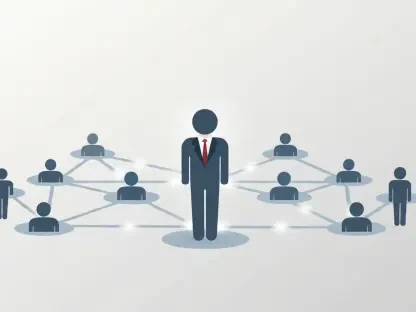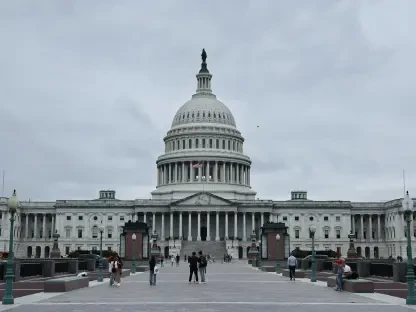Within the evolving landscape of the workforce, a distinct generational divide is emerging in sick leave patterns, with Baby Boomers reportedly taking more sick days than their younger counterparts, like Gen X, Millennials, and Gen Z. In 2025, the average sick days for Boomers stood at 4.0, while younger workers registered an average of about 2.5 to 2.7 days. This difference raises pertinent questions about the underlying reasons and implications of this trend for the workforce.
Overview of Generational Sick Leave Patterns
A closer look at the generational sick leave patterns reveals significant disparities in how different age groups utilize their sick leave entitlements. Baby Boomers tend to use more sick days on average compared to younger generations. This pattern suggests not merely a reflection of age-related health issues but rather a deeper financial and social dynamic at play. The potential consequences of these trends extend to workforce productivity and employee well-being, with notable impacts on sectors such as healthcare, retail, and gig economy jobs where absenteeism can critically affect operations.
Although sick leave regulations exist to govern worker rights, the implementation and cultural factors surrounding them vary greatly. Workplace norms can influence whether employees feel empowered to take necessary sick leave without fear of reprisal or economic loss. As such, this issue holds significant weight in discussions of labor rights and employer responsibilities.
Trends Influencing Generational Sick Leave Differences
Socioeconomic Factors and Their Impact
A vital aspect in understanding generational differences in sick leave usage is the socioeconomic environment surrounding Baby Boomers compared to younger workers. Stability in the financial and job security domains significantly influences the decision to take sick leave. Baby Boomers generally enjoy more financial security and are often in more stable jobs, which allows them to take sick leave without undue concern over economic consequences. In contrast, younger generations often face financial instability due to increasing living costs and precarious employment models, causing hesitation to take sick leave.
This entrenched socioeconomic disparity underlines how financial hardship and insecurity can discourage younger workers from taking time off, impacting their health and productivity. As a result, the issue transcends beyond the personal, becoming a systemic problem with implications for occupational health and workplace dynamics.
Health and Wellness Perspectives
Analyzing health and wellness challenges reveals differing generational experiences affecting sick leave behavior. While older workers may face more chronic health conditions necessitating longer sick leaves, younger workers increasingly struggle with mental health challenges. Despite this, younger workers often push through their ailments due to fears of employment consequences, leading to a concerning trend of “presenteeism.”
While Baby Boomers take time off to recover effectively, younger workers might prioritize job preservation, risking exacerbation of their conditions. The differences in sick leave patterns thus offer insights into how health issues are perceived and managed, suggesting a vital need for addressing mental health in the workplace to encourage healthier and more sustainable labor practices.
Challenges and Barriers to Equitable Sick Leave
A key challenge faced by younger workers is accessing adequate sick leave without financial concerns. Many encounter barriers such as inadequate sick pay, which is disproportionate to living costs, forcing them to choose between health and financial stability. In this context, presenteeism becomes a prevalent issue, where workers attend their jobs despite being unwell, resulting in diminished productivity and deteriorating health.
Bridging the disparity in sick leave access would require a robust overhaul of current policies and possibly a reevaluation of compensation during sick leaves. Encouraging companies to adopt flexible sick leave policies and offering better financial support during sick leave could present more equitable solutions for all workers.
The Role of Employment Policies and Regulations
The legal framework governing sick leave plays a critical role in shaping how equitably sick leave is distributed across generations. Statutory Sick Pay and other similar regulations are designed to provide a safety net, yet often fall short of ensuring suitable compensation across the board. While these laws set the minimum standards, there is a growing recognition of the need for comprehensive policies that address generational inequities in access and utilization.
For companies, aligning corporate sick leave policies with regulatory standards while promoting a culture of health and productivity can bolster employee support systems. By strengthening workplace sick leave rights, organizations not only improve employee morale but also enhance overall operational productivity.
Future Outlook on Sick Leave and Workforce Well-being
As the workplace evolves with technological advancement and social change, the dynamics of sick leave are poised for transformation. Looking ahead, more inclusive and accommodating sick leave policies could emerge, paralleling economic and technological shifts, and creating a more supportive environment for mental and physical health management.
The potential improvement in sick leave culture could lead to greater productivity, as workers would not have to compromise their health for financial considerations. Innovation and regulatory adjustments hold the key to leveling the playing field, ensuring all workers, irrespective of age or financial status, have equitable access to necessary recovery time.
Conclusion and Recommendations
This examination of generational sick leave disparities uncovers essential issues related to financial stability and workplace health. Moving forward, a systemic change is necessary to address these disparities comprehensively. Governments and employers must collaborate to design and implement policies that promote both equitable sick leave access and financial protection for all workers. By investing in such initiatives, the workforce can look toward a future where economic stability and health are no longer at odds, and all employees can utilize their entitled sick leave without the fear of adverse impacts on their financial or job security.









